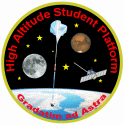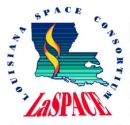



Payload 13 Information
Payload Flight Number:
Institution:
Payload Title:
Stratospheric background characterization of a CdTe spectro-polarimeter prototype for X ray and gamma ray astronomy
Student Leader:
Faculty Advisor:
Payload class:
Large
Payload ID Number:
13
Mass:
4-5 kg
Current:
2000 mA
Serial Downlink:
Yes
Analog Downlink:
No
Serial Commands:
Yes
Discrete Commands:
No
Payload Specification & Integration Plan
Due: 06/26/2015
Delivered:
Payload Integration Certification
Scheduled: 08/07/2015
Actual:
Flight Operation Plan
Due: 08/03/2015
Delivered:
Final Flight / Science Report
Due: 12/11/2015
Delivered:
Abstract:
Among the last astronomy frontiers, are the polarization measurements of X-ray and gamma ray emissions from as diverse phenomena as gamma ray bursts, pulsars, AGNs, etc. If so far, e.g., gamma ray circular polarimeters have not yet been developed, for linear polarization Cadmium Telluride (CdTe) spectrometers are the most promising detectors for future space missions. Stratospheric balloons provide enough time to test polarimetry measurements and calibrate background radiation. We propose flying a large ( > 3 kg ) payload for characterization of such background in the 20–1000 keV energy range, using a small 4x4 pixels CdTe prototype. This may not be the “sexiest” experiment, but is crucial for future steps, providing also hands-on experience for undergrad students, within an international collaboration. Instrumentation wise we plan upgrading the electronics and detection capacities of the Compact Array of Cadmium Telluride Micro Spectrometers (CACTuS). During its balloon flight, in 2002, it collected data just for single events background. We now propose to explore the implementation of a coincidence logic (using single multichannel Application Specific Integrated Circuits) for double & multiple events. Double events (two hits in different pixels, the first interaction being a Compton) are essential to determine Compton photons' new direction and therefore the polarization direction.
Payload Application:
Payload Integration Plan:
Science Report:
Monthly Briefings:
|